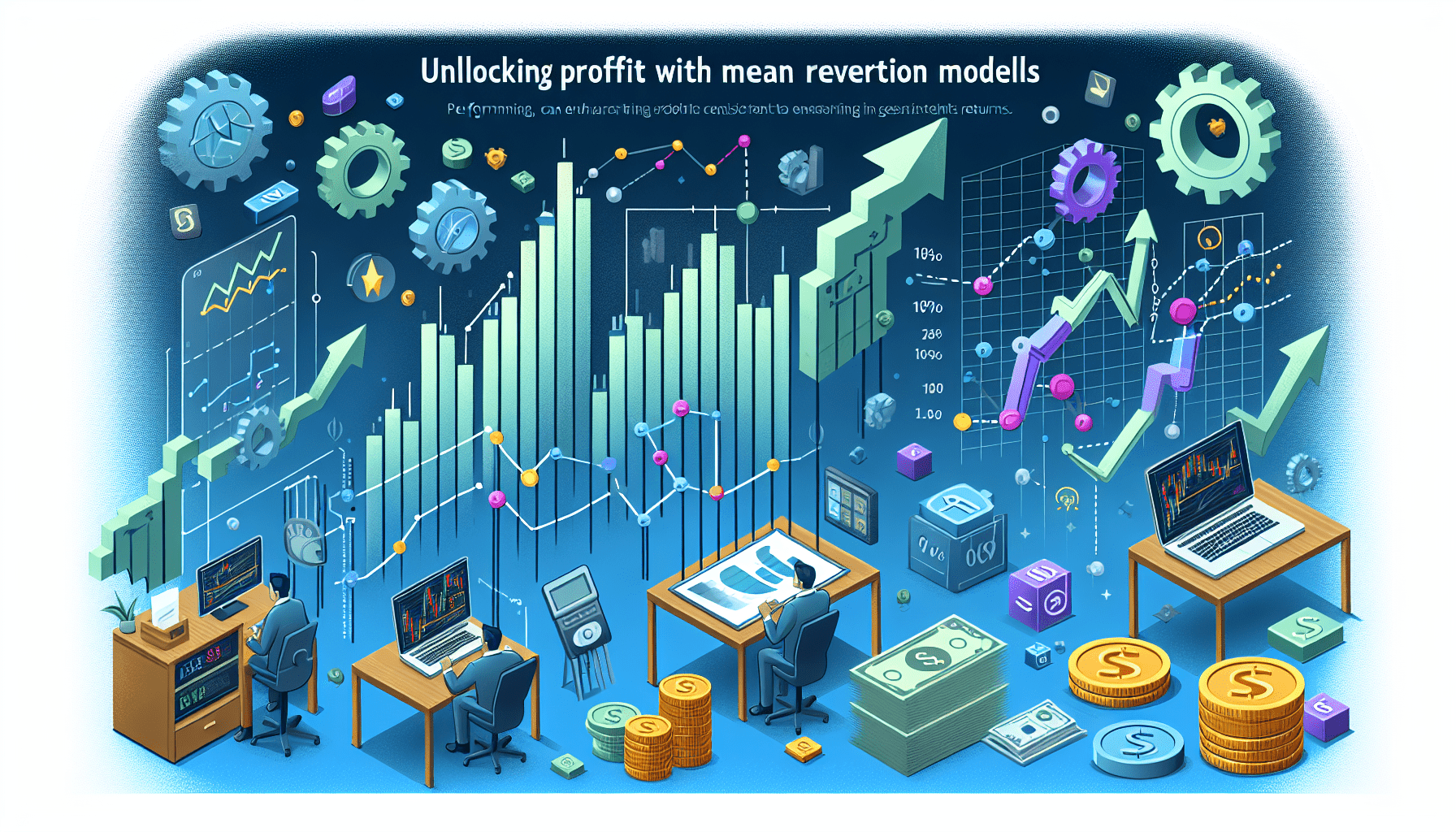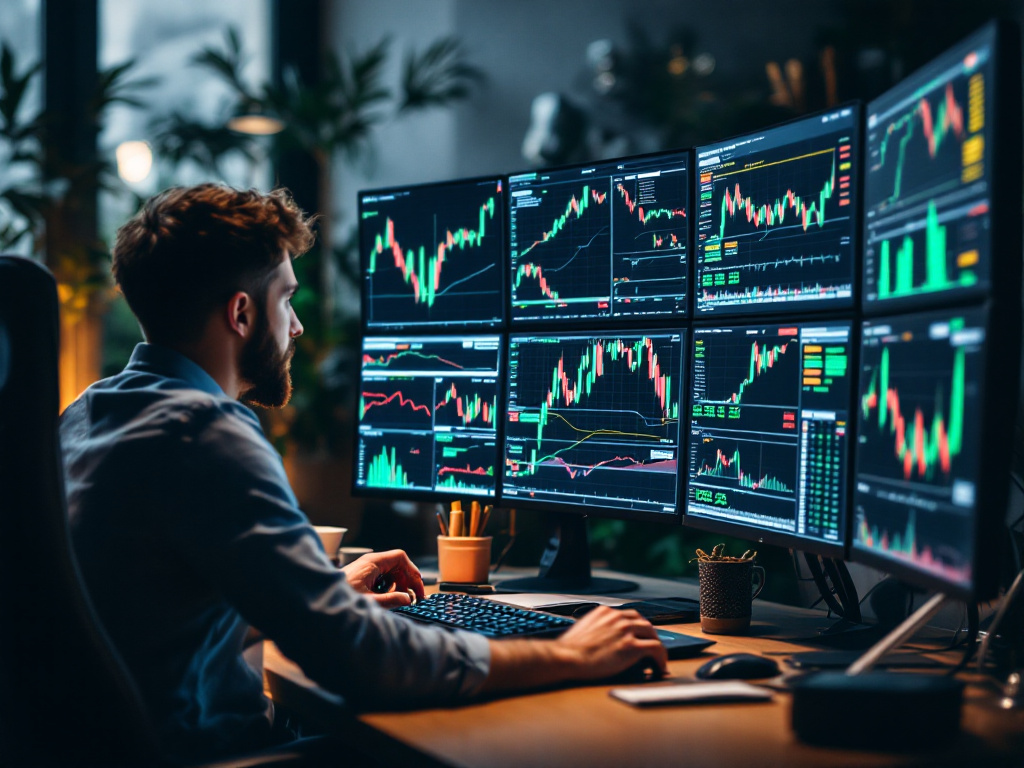Mean Reversion Models: Mastering Trading Strategies
In the ever-evolving world of trading, understanding and harnessing the power of mean reversion models can be a game changer. These models, based on the statistical concept that prices tend to return to an average value, offer both novice and experienced traders a reliable method to navigate market fluctuations. Whether you are looking to employ mean reversion trading strategies in stock trading or even in forex markets, the insights provided here are designed to help you implement these strategies effectively.
Understanding Mean Reversion Models
Mean reversion models are built on the idea that asset prices fluctuate around a mean or average level over time. When prices deviate significantly from this average, they eventually tend to revert back. This simple yet powerful concept is the backbone of many trading strategies designed to capitalize on temporary mispricings.
The principles behind these models can be found in both academic research and practical applications. Traders use these models to identify potential entry and exit points, which, when combined with proper risk management, can lead to more informed decision-making in markets with high volatility.
Why Use Mean Reversion Models in Trading?
There are several advantages to incorporating mean reversion models into your trading arsenal:
- Predictability: The statistical basis provides a sense of predictability in price movements, which can be particularly useful during periods of market uncertainty.
- Versatility: They are applicable across various asset classes, including stocks and forex. For instance, many traders have found success with advanced mean reversion trading algorithms that analyze historical price trends.
- Risk Management: By identifying when prices deviate too far from their average, traders can set more informed stop loss and take profit points to control risk exposure.
Implementing Mean Reversion Models in Your Trading Strategy
There are multiple approaches to integrating mean reversion trading strategies:
- Basic Model Implementation: Begin by analyzing historical data to calculate the average price over a specific period. This method is often used by beginners who are learning how to implement mean reversion strategies in trading.
- Algorithmic Trading: Advanced traders may develop a mean reversion algorithm or a comprehensive mean reversion trading system that automatically triggers trades once the price deviates significantly from the recent average. This process not only minimizes human errors but also speeds up trade execution, which is crucial in fast-moving markets.
- Adopting Multiple Time Frames: For deeper insights, consider using multiple time frames. This allows for a comparison between short-term fluctuations and long-term trends, optimizing your entry and exit decisions for both stock trading and forex markets.
When selecting a trading system, always check for flexibility. For instance, best mean reversion models for stock trading offer adjustments based on market volatility, enabling traders to optimize performance during different market conditions.
Figure 1: A comprehensive chart illustrating the principles of mean reversion in trading.
Deep Dive: Strategies for Diverse Markets
One of the most appealing aspects of mean reversion models is their versatility. Whether you are interested in mean reversion trading strategies for forex markets or want a robust system for stock trading, these models can be tailored to suit your needs.
For stock trading, where volatility can sometimes create confusion, these models act as a signal to identify when a stock price is likely to return to its historical average. This method not only helps you identify buy opportunities but also warns of potential sell points, especially when implemented within a well-designed mean reversion trading system.
For forex markets, the consistency offered by these models is invaluable. When combined with currency-specific indicators, traders can better manage risks while capturing short-term market inefficiencies.
The Role of Technology in Enhancing Mean Reversion Strategies
Technological advancements have paved the way for more sophisticated trading systems driven by mean reversion models. Modern platforms can integrate real-time data analytics and machine learning algorithms to continuously optimize your trading strategy. This is particularly important for executing a mean reversion algorithm that adjusts parameters based on changing market conditions.
Many trading platforms now offer built-in support for developing and testing these strategies. Whether you are coding your own algorithm or leveraging a pre-built system, it is crucial to backtest your strategies thoroughly under different market scenarios to ensure robust performance over time.
Tips to Implement Successful Mean Reversion Trading
Here are some actionable tips to make the most of mean reversion models in your trading strategy:
- Start Simple: For beginners, begin with a basic model to understand market trends. Gradually increase the complexity as you gain confidence.
- Backtest Strategies: Use historical market data to test the reliability of your mean reversion models. This step is crucial to minimize risks before applying the strategy in live trading.
- Stay Updated: Markets evolve, and so should your strategies. Regularly recalibrate your model based on market feedback and emerging trends.
- Diversify: Do not rely solely on one approach. Combine mean reversion signals with other technical indicators to validate trading decisions.
- Risk Management: Always incorporate stop losses and risk-reward evaluation to protect your investments.
Common Challenges in Using Mean Reversion Models
While the potential for profit is significant, using mean reversion models is not without challenges:
- False Signals: In highly volatile markets, prices might deviate from the mean for extended periods, leading to false signals.
- Overfitting: There is a risk of overfitting your model to historical data, which might not perform well under future market conditions.
- Market Regimes: Changes in market behavior can affect the reliability of these models. It’s important to adjust your strategy when market conditions shift.
Advanced Techniques and Future Directions
For those ready to elevate their trading strategy, consider incorporating advanced mean reversion trading algorithms that leverage data from multiple sources. For example, algorithmic approaches can combine technical indicators with sentiment analysis to provide a more comprehensive perspective on market trends.
Looking ahead, the integration of artificial intelligence in trading is expected to further refine mean reversion models. By using machine learning to continuously adjust and optimize parameters, traders can stay ahead of market shifts and maintain a competitive edge.
Figure 2: An advanced look at algorithmic systems harnessing mean reversion principles in dynamic markets.
Case Studies and Real-World Applications
A growing number of traders and financial institutions are incorporating mean reversion models into their trading strategies. A notable case involves a trading firm that utilized a comprehensive mean reversion trading system to achieve consistent returns in a volatile market environment. By coupling historical data with real-time analytics, they were able to optimize their trading windows and improve overall performance.
Another instance can be seen in retail trading platforms where introductory courses on how to implement mean reversion strategies in trading are becoming increasingly popular among beginner traders. These educational initiatives empower individuals by demystifying the complexities of market behavior, proving that even sophisticated models can be understood and applied with the right guidance.
Conclusion
Mean reversion models offer a robust framework for navigating the intricacies of trading. By understanding the underlying principles and employing best practices, traders can leverage these models to identify profitable opportunities in stock trading, forex, and other markets. Whether you are just starting out with a mean reversion trading system for beginners or looking to implement advanced mean reversion trading algorithms, continuous learning and proper risk management are key to long-term success.
As the financial landscape continues to innovate, the versatility of mean reversion models remains a constant, proving their value time and again. Embrace these strategies, refine your approach, and set yourself on the path to more informed and successful trading.







